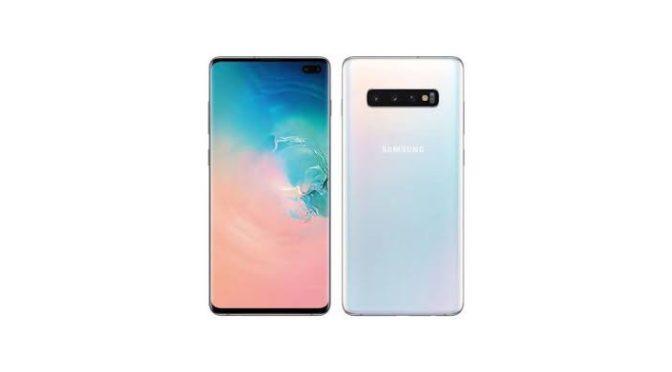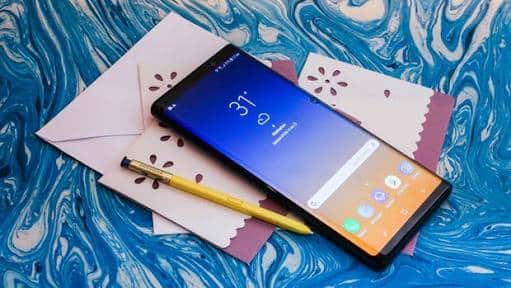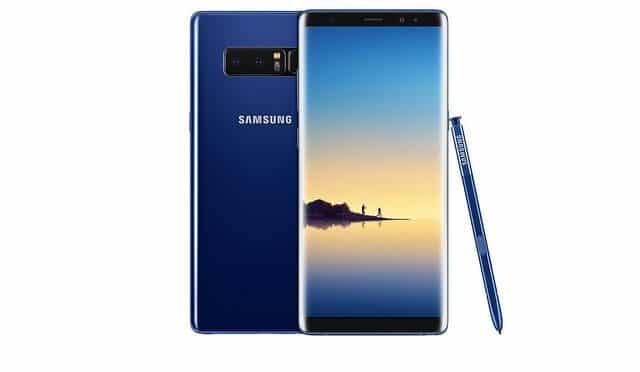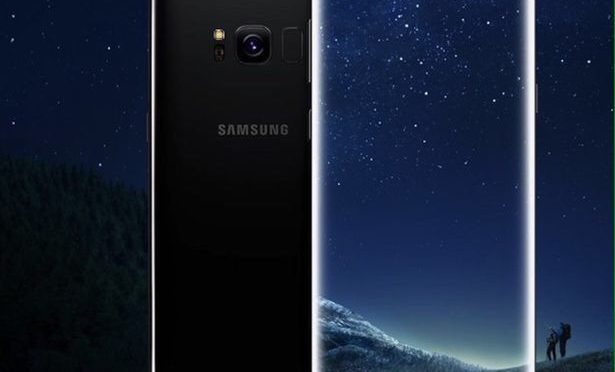All you need to know about the new #Samsung Galaxy S8 in 5 minutes.
Article Courtesy | The Verge
Preorders begin March 30th, three weeks before the release date.
The Samsung Galaxy S8 is the nicest phone I’ve ever held. It’s a beautiful combination of glass, metal, and an absolutely massive screen in a body that’s much smaller than you might expect.
And that might not be enough to make it stand out anymore.
There are two versions of the S8: the standard Galaxy S8 with a 5.8-inch screen and the larger S8 Plus with a 6.2-inch screen. Both are available for preorder on March 30th and will be shipping in the US on April 21st. Pricing, as always with Samsung, is up to the carriers — but you can expect them to command a premium price. The early word is that it will start at $720.
Here’s everything we learned about these two phones after using them for an hour or two last week.
Holding the S8, I’m struck by the fact that nothing about it feels especially surprising, and not just because damn near everything about it has been leaking for the past few months. The boldest feature is every phone’s more important feature: the screen. On the S8, it extends up and down to cover nearly the entire front of the phone. It also curves around the left and right, something Samsung is calling the “infinity display,” which gives it the look of not having any bezels at all. And speaking of curves, the four corners of the screen are also slightly curved instead of squared-off, which adds some elegance and perhaps some screen durability.
The S8 and S8 Plus fulfill Samsung’s promise of fitting a big screen in a smaller body, and so they’re quite a bit more usable than other large-screened phones. I didn’t experience some of the accidental touch issues that I still get with the Galaxy S7 Edge. But I also only had about an hour with the phone, so it’s possible that it could still be an issue.
More than anything else, the S8 is nice. It may seem like table stakes in 2017, but these phones are incredibly well-designed. There are no seams, only the barest of camera bumps, and everything seems milled down to sub-millimeter tolerances. They feel inevitable in a way that almost becomes boring. Many of the design touches are evolutions of the S7 Edge and Note 7, but refined to their Platonic ideals.
Extending the screen to near the bottom of the phone means that there’s no room for Samsung’s traditional hardware home button. Instead, it uses software buttons like other Android phones. It also uses some haptic feedback like Apple’s iPhones to create a virtual feeling of pressing a home button, though it only works on the very specific spot where the software home button appears. One neat feature: some Android apps hide those main Android buttons when they go full screen, but you can still firmly press the bottom of the screen to activate the home button.
SAMSUNG BORROWS FORCE TOUCH FROM THE IPHONE, AT LEAST FOR THE HOME BUTTON
Getting rid of the physical home button also means that Samsung had to move the fingerprint sensor. It’s on the back now, right next to the camera. That’s not a very convenient place for it, honestly. It’s too high up on the phone to comfortably reach and it’s also right next to the camera module, which might mean you’l be getting fingerprints on the camera more often than you’d like.
Speaking of fingerprints, because the S8 is nearly all glass, you’ll see them on the back a lot, but they’re not as prominent as you might expect (they’re worse on the LG G6, for example).
Both the USB-C port and the 3.5mm headphone jack (hallelujah) are located on the bottom of the phone. You have power on one side and volume buttons on the other, underneath which you’ll find a whole new button that’s dedicated to the big new software feature on the Galaxy S8, Bixby. There’s much more on Bixby below, but for now I’ll just note that dedicating a hardware button to this software feature is a big bet on Samsung’s intelligent assistant. If Bixby ends up being not that great, I expect many people will be looking for ways to remap that extra hardware button (or decrying that it’s vestigial).
GALAXY S8 SPECS
Processor
US: Qualcomm Snapdragon 835 Octa core (2.35 GHz Quad + 1.7 GHZ Quad)
International: Samsung Exynos Octa core (2.35 GHz Quad + 1.9 GHZ Quad)
Display
Galaxy S8: 5.8-inch OLED, 2960 x 1440, 570ppi
Galaxy S8 Plus: 6.2-inch OLED, 2960 x 1440, 529ppi
Cameras
Rear: 12-megapixel, OIS, F1.7
Front: 8-megapixel, auto focus, F1.7
Batteries
Galaxy S8: 3,000 mAh
Galaxy S8 Plus: 3,500 mAh
Dimensions
Galaxy S8: 148.9 x 68.1 x 8 mm, 155g
Galaxy S8 Plus: 159.5 x 73.4 x 8.1 mm, 173g
Other specs
Android 7.0 Nougat
USB-C, 3.5mm headphone jack
NFC and MST for Samsung Pay
IP68 water and dust resistant
Wireless charging
LTE Cat.16
Bluetooth 5.0, can stream to two devices
Wi-Fi a/b/g/n/ac
As you’d expect, the S8 has the best specs you can get on an Android phone. Depending on the region, you’ll either get Qualcomm’s newest (and slightly rarer) Snapdragon 835 or Samsung’s own Exynos. In both cases, Samsung is touting that they’re built on a 10nm chip, which should theoretically help with power consumption. In my brief time with it, everything was whip-fast. Hopefully it will stay that way over time — Samsung phones often don’t.
The standard S8 has a 570ppi 5.8-inch screen, with a resolution of 2960 x 1440. The S8 Plus has the exact same resolution on its 6.2-inch screen, which works out to 529ppi. For my money, the standard S8 is the way to go. It still feels like a massive screen and the body is significantly smaller. The height of the screen is interesting, too: the aspect ratio is a super-tall 18.5:9, which adds a bunch of screen real estate to scroll through. I didn’t get to test a bunch of third-party apps, so hopefully we won’t see too much weirdness with the new aspect ratio. Even if we do, Galaxy phones are popular enough to prod developers to update their apps to support it.
In terms of other specs, it’s pretty bog standard stuff: 4 gigs of RAM, 64 gigs of onboard storage, and an expandable SD card slot.
GALAXY S8 BATTERY
Nearly 900 words in and I haven’t made an exploding phone joke (you’re welcome, Samsung). But now is the time to point out that the last time the phone maker released a phone this big and beautiful, it literally set itself on fire on a disturbingly regular basis. The company’s responses to this issue were botched and bad for some time before it pivoted, apologized, and introduced a new process for checking battery safety. Those safety checks are important, but Samsung still has to own all the exploding phone jokes and hear them at every mention of its phones for a while.
So on the S8, Samsung did not push the envelope when it comes to capacity. The S8 has a 3,000mAh battery and the S8 Plus has a larger 3,500mAh battery — the same capacity that the Note 7 had. But neither is especially large when you consider the fact that they need to power towering screens. Samsung claims it has tweaked the battery chemistry to help the batteries last longer after a year or two of use.
To make up for it, Samsung is offering the usual suite of power options: Qualcomm Quick Charge and support for both major wireless charging standards. But I still have reservations about how long the batteries will last on these phones. In fact, it may be a reason to seriously consider getting the larger S8 Plus.
GALAXY S8 CAMERAS
Another place where Samsung hasn’t really pushed the envelope is the camera. The S8 uses the exact same rear camera as the Galaxy S7, a 12-megapixel sensor with OIS. Samsung says it’s done work on the software side to improve picture quality, and in my short time with it I found it to be significantly faster than the camera on the Galaxy S7 Edge.
It is notable that the S8 Plus doesn’t get a better camera or a dual-camera setup. Excepting screen and battery size, both phones are identical.
I suspect it’s using the “take pictures all the time in the background and just save them when you hit the shutter button” trick we’ve seen on other phones. It also borrows another trick from other Android phones: the shortcut to launch it is double-pressing the power button now (since the home button is virtual).
AFTER THE SMOKE CLEARS: SAMSUNG’S QUEST FOR REDEMPTION
The definitive story of the making of the Galaxy S8
The front-facing camera (aka the one you really care about) has gotten an upgrade. It’s an 8-megapixel sensor now, but more importantly it has autofocus. Switching between cameras was fast and easy, as was swiping over to get to Samsung’s kajillion photo gimmick settings. But some of those gimmicks are pretty neat, I’m especially fond of the GIF mode, though I do wish it was just automatic like you can do with Apple’s Live Photos and the Motion Stills app.
In any case, the competition for the “best smartphone camera” is way more interesting now than it was a year ago, when just Samsung and Apple were at the top. Now, Apple and LG are sticking multiple cameras in their phones while Google’s Pixel has jumped to the top of the Android camera quality game. It’s too early to say that Samsung is resting on its photography laurels with the S8, but it is fair to say that there’s probably nothing here that will give other companies reason to worry.
GALAXY S8 SOFTWARE
That Samsung is capable of making great hardware should come as no surprise to anybody. It’s the software where we have reason to be skeptical. Running all the way back to the bad old days of TouchWiz, Samsung has a well-earned reputation for taking Android and mucking it up with bad ideas.
For the past few years, though, the common refrain has been restraint, and I’m going to repeat it again today. Samsung has done a pretty good job keeping its worst instincts in check. There are a ton of weird features to find in the dark recesses of the settings menu, but out of the box the basic look, feel, and functionality of Samsung’s Android skinning is pretty good.
And there are some genuinely great parts, too. The iris scanning that lived all-too-briefly on the Note 7 is back, if you’d like to unlock your phone that way. But the best way to unlock the phone is Samsung’s new face detect system. It takes about 20 seconds to set up and once you do, it works really well. It’s not the same, bad face unlock that was introduced in Android years ago, it’s an entirely new system Samsung made.
FACE UNLOCK IS AMAZING; DEX IS SUPER, SUPER NERDY
In my 10 minutes or so of playing with it, it didn’t fail to unlock a single time. In fact, it was so fast that we a hard time filming it. I had to point the phone away from my face and then just tilt it up to look at myself. I unfortunately forgot to print a glossy 8 x 10 of my face to test with, though, so I can’t say if maybe it’s tuned to be a little too forgiving when it tries to see if it’s you. Samsung admits the face-detect system is less secure than the other ways of unlocking, so you will still need to set up the iris or fingerprint scanners to make payments.
There is one gimmick that in theory I should be excited about but in practice I’m just not: DeX. It’s a feature where, after buying a specialized dock, you can plug your Galaxy S8 into a monitor, keyboard, and mouse and get a full desktop mode. Unlike solutions we’ve seen in the past (RIP Motorola Atrix), the desktop mode here simply offers Android apps instead of a full desktop browser. It looks well-designed for what it is, offering full access to your notifications and resizable windows. But it can’t escape the fact that outside a few apps like Samsung’s own browser, Microsoft Office, and Adobe’s creative suite, Android apps are bad on big screens.
People who unironically call themselves Road Warriors like they’re IT managers in 1999 will love it. The rest of us probably won’t use it. And that’s fine.
BIXBY, SAMSUNG’S PERSONAL ASSISTANT
Samsung may not have put a ton of effort in changing its hardware design language, updating its camera, or packing in a bigger battery. But it has been focused on figuring out how to make software that people actually like, and it’s all centered on a new virtual assistant called Bixby.
As I mentioned above, Bixby is launched by pressing an honest-to-god dedicated physical button. It has basically three modes:
A short-press of the button takes you to Bixby Home (you can also swipe over to it from the home screen).
Long-pressing the button turns on Bixby’s voice features.
There’s a small button on the camera app for Bixby’s augmented reality features.
Let’s start in the middle with voice, because speaking to Bixby is the most interesting and challenging set of features here. Essentially, what Samsung is trying to do is create a new kind of virtual assistant, one that helps you use the device directly in your hands rather than ask random questions from the cloud.
I wasn’t able to test this myself, unfortunately, but Samsung did run us through a couple demos. In one, you can open the gallery app and then issue voice commands for editing a photo rather than trying to dig through the interface to find the right button. “Bixby, rotate this photo left,” and “Bixby, send this photo to Dan.” If you live that Samsung Life, you can use Bixby to send videos to your TV or turn off your smart lights, too.
The goal is that “anything you can control with touch, you can also control with voice.” It’s a laudable goal, but it’s also one I very seriously doubt Samsung can achieve. For one thing, it only works with about 10 Samsung apps at launch. Also, it can only work with apps that are written to support Bixby. Unlike Google Now on Tap, Bixby doesn’t do any screen reading to try and guess what’s on the screen. So it might be a virtual assistant, but it’s very far from an artificial intelligence.
BIXBY IS SAMSUNG’S BIG BET
The other big question with Bixby is how exactly is it differentiated from the Google Assistant. It seems pretty clear, but then you discover that there’s a bunch of overlap. For example, you can do things like set alarms with Bixby. There’s also Bixby Home, which so far as I can tell is a giant, random set of information cards for things like your smart light bulbs, fitness data, local news and weather, and whatever else Samsung thinks belongs in a virtual assistant home screen. It looks like every widget screen you’ve ever seen on a phone, which is to say it looks like sort of a mess that you probably won’t use very much.
Last but certainly not least are Bixby’s camera features, which are Bixby’s best features. You can launch it either directly in the camera app or from Bixby Home, and what it essentially does is turn your camera into a photo search machine. Point the Bixby camera app at anything and it will identify it and suggest web searches for it. I tried on flowers and it gave me options to buy flowers on Amazon or look at more flowers on Pinterest. It wasn’t able to precisely identify my Android Wear watch, but it did know it was a round watch and offered to let me buy a real one on Amazon.
It also works with more prosaic things. Samsung ran a demo with wine labels and book covers, both easily identified and given options to buy. Samsung says it’s working with specific partners for Bixby — including Amazon and Pinterest — but it doesn’t appear that it works with the biggest search engine of them all, Google. That’s not really a surprise.
GALAXY S8 RELEASE DATE, COLORS, AND PRICE
In the US, the S8 and S8 Plus will come in black, gray, and silver. Gold and blue are options internationally.
The Galaxy S8 and S8 Plus are available for preorder starting tomorrow, March 30th, and you should get a free Oculus headset with a controller and a set of games along with your preorder. The official release in the US is on April 21st. Unfortunately, Samsung won’t confirm pricing, leaving that to its carrier partners — again, it looks like it’ll start at around $720.
First Crush | Explore #Music #News #Love










